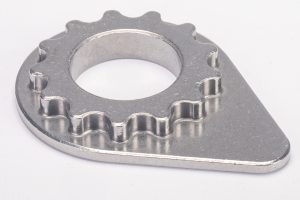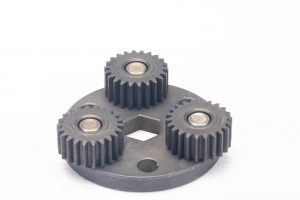The process is efficient because it produces moderate to high volume net or near-net shapes, with almost no raw material loss, economically.
Powders can be alloyed to give tensile strengths from 310 MPa (15 tonnes PSI) to 900 MPa (60 tonnes PSI) after heat treatment. Components can be manufactured to give strength over twice that of wrought mild steel if necessary.
The P/M process offer the following advantages:
- Ability to produce high precision components in volume.
- Only the exact amount of material is used.
- Net shape production eliminates or minimises machining.
- GTB’s patented process can completely eliminate secondary
machining for cross holes in certain applications leading to further
material & machining savings. - Density, or conversely porosity, can be accurately controlled to suit
particular requirements. - Allows combination of materials which cannot be produced in any
other way, including dissimilar metals, non metallic and materials with
widely differing characteristics. - Allows design in of self-lubricating properties.



| Process | Unit Cost | Material Cost | Design Options | Flexibility | Volumes |
|---|---|---|---|---|---|
| P/M | avg. | low | greatest | avg. | med-high |
| Machining | n/a | high | high | high | low |
| Fineblank | avg. | low | avg. | low-avg. | high |
| Metal Pressing | high | lowest | avg. | low | highest |
| Forging | high | avg. | avg. | least | high |
| Sand Cast | low | avg. | high | avg. | low-med |
| Investment Cast | avg. | high | high | high | low-high |
| Die CAst | high | low | zinc/alum/nag | high | high |
GTB Components regularly re-engineer parts never before made by the P/M process, and provide cost effective design solutions for production by powder metallurgy. This results in considerable savings to our customers and often an improvement in the performance of the product
